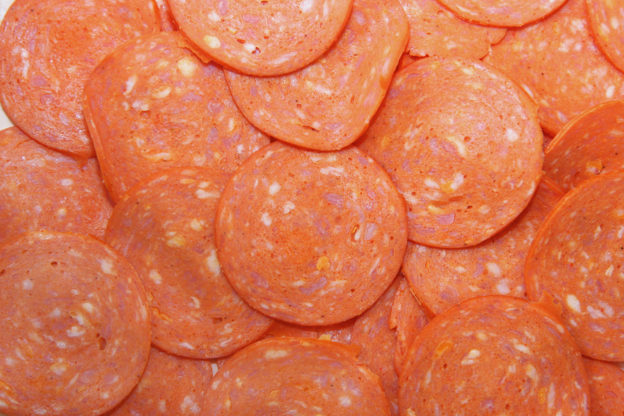By David Blyweiss, M.D., Advanced Natural Wellness
March 20, 2020
I once knew a guy, a healthcare executive, who had a terrible stroke. He was only 38 years old and was left with half his body paralyzed.
It was a sad situation to say the least.
But it wasn’t all just chance. The guy smoked, he ate lots of meat and non-foods like twinkies (this was back in 1983) he didn’t sleep well, and I don’t believe I ever saw him move much from behind his desk.
And he’s just one of the many poor folks who have their lives permanently changed or ended by this condition.
In fact, every 40 seconds, someone in the U.S. suffers from a stroke. And every 4 minutes, a stroke causes someone to die.
Of course, these are some startling facts. What’s even more surprising is this…
Up to 80 percent of all strokes could be prevented with some basic lifestyle changes!
In sheer numbers, this means four out of every five strokes could be avoided. It’s too late for the gentlemen mentioned above, but it’s a critical piece of information for you… here… today.
This is especially important if you are like many of my patients who worry about a long family history of strokes.
You aren’t doomed, but you do need to take some action.
Open your arteries, improve blood flow for a new health miracle...
Did you know your circulatory system has over 60,000 miles of arteries, veins and other blood vessels, if stretched end to end?
But as you age, your blood vessels undergo changes, which may cause them to stiffen, thicken and get clogged.
GOOD NEWS! Doctors have now identified a “Miracle Molecule” inside your arteries that helps OPEN your arteries and IMPROVE blood flow.
It’s what Dr. Valentin Fuster calls it, "One of the most important discoveries in the history of cardiovascular medicine."To you, that means...
- Healthy blood pressure
- Sharper mind and memory
- Skyrocketing energy and muscular strength
- Increased pleasure and passion in the bedroom
- Improved circulation to every cell and organ in your body
Go here to discover a new natural way to significantly boost the levels of this miracle molecule in YOUR body NOW!
I always explain that, even if you have gene variants associated with stroke risk, it’s your lifestyle that counts the most.
As a matter of fact, whether you are at genetic risk or not, poor lifestyle habits increase your risk of stroke by 66%.
So let’s take a look at the best things you can do to protect yourself from stroke for years to come.
First off, here are the magic four factors: 1) Be a non-smoker, 2) eat a healthy diet, 3) participate in regular physical activity and 4) maintain a healthy weight.
Now, smoking is an easy one. You either do it or you don’t. So, challenge yourself to kick the habit for your own health’s sake.
After that, the other three items have a way of taking care of themselves… as long as you’re following a healthy lifestyle.
It’s as simple as this. If you eat a healthy diet and get in a good workout on a regular basis… a healthy weight will follow.
When I explain this to my patients, they always nod their heads in agreement. But then, they give me looks of confusion when I talk about what foods they should and shouldn’t be eating.
So let me break it down for you the same way I do for those who come into my clinic.
3 Foods that Contribute to Stroke
If you’d like to live a stroke-free life, then there are three types of foods that can seriously derail your efforts:
Sodium rich foods may be your worst enemy if you want to avoid a stroke – or death by stroke. The current recommendation is to consume less than 2,300 mg of sodium daily if you are in good health. But guidelines are quickly moving toward no more than 1,500 mg per day. Personally, I’d slash that number down to below 1,000 mg.
High carb foods with a high glycemic load (GL) increase your stroke risk by nearly 20%. If you’re not familiar with the term, GL measures the quality of a carb, just like the glycemic index does. But it also measures the amount of carbohydrates in a serving of food. So the glycemic load is a better indicator of how carbohydrate rich foods will affect your blood sugar.
Red and processed meats are also enemies when it comes to your chances of experiencing a cerebral event. Red meat, especially processed red meat, increases your risk of stroke. I always recommend enjoying small amounts of grass-fed meat in your diet… and limiting intake of processed meats to those few occasions when you can’t avoid them (i.e., the occasional picnic or holiday meal.)
Are You Suffering From...
- Love handles and a pot belly
- Romance that isn't what it used to
- Forgetfulness and inattention
- Low (or no) strength and endurance
- A sex drive that's shifted into neutral...or worse
If so...you may have Mature Male Burnout. Click here to discover more about this unique condition and what you can do about it.
This is a surprisingly short list. And if you are vigilant, it’s not hard to avoid these foods.
On the other hand, there are plenty of stroke defeating foods that you can enjoy every single day.
6 Foods that Protect Against Stroke
Fruits and vegetables count for a lot. A BIG LOT! For every seven ounces of fruit you eat each day your stroke risk is decreased by about 32%. And for every seven ounces of veggies, it’s reduced by 11%.
Get fishy for stroke prevention. Eating five or more servings of fresh, wild-caught fish each week lowers stroke risk. The omega-3 fatty acids found in fish provide arterial protection that prevents the plaque buildup that can block blood flow to the brain.
Drink three cups of tea each day. People who drink three or more cups of tea daily cut their chances of stroke, including cerebral infarction and intracerebral hemorrhage, by 15% to 20%. You know my go to drink is green tea…having it now as I write this.
Indulge your chocolate cravings. The flavonoids in dark chocolate can help lower your risk of stroke by enhancing blood flow, lowering blood pressure and reducing inflammation. For best results, choose a high quality dark chocolate that contains about 70% cacao and stick to no more than 3.5 ounces a week (.5 ounces daily).I keep mine in the freezer and let it melt in my mouth for more time with the chocolate on my taste buds.
Eat more potassium rich foods. Potassium balances out the negative effects of sodium, and getting just 3500 mg of this mineral daily is associated with the lowest risk of stroke. Avocado, apricots, cantaloupe, artichoke, mangoes and pears are all good sources of potassium.
Go nuts for nuts. People who eat the most tree nuts tend to have lower odds of suffering a stroke – and early death from stroke – than those who eat the least. Brazil nuts, walnuts, pecans, pistachios and other tree nuts all have a positive effect on your cardiovascular system, which is responsible for pumping blood to your brain.
Learn the Signs of a Stroke
In the meantime, it is critical you know the signs of a stroke since any delay in treatment can lead to permanent damage.
So remember the FAST acronym that you can use to determine the warning signs of a stroke.
This stands for…
- Facial drooping
- Arm weakness
- Speech difficulty
- Time to call 911
If you need help identifying these symptoms, there are some simple ways to check them.
A smile will quickly show if your face is drooping, because only one side of your mouth will be able to lift up into the smile. Raising both arms over your head will reveal any arm weakness (in either arm)… and speaking a full and coherent sentence can determine any speech difficulties.
For an extremely quick check of symptoms, try raising your arms while sticking out your tongue. Your tongue should come out in the middle of your mouth, not to one side.
If you experience difficulty with any single one of these tasks, it’s time to call 911 without delay!
SOURCES:
Rutten-Jacobs Loes CA, et al. Genetic risk, incident stroke, and the benefits of adhering to a healthy lifestyle: cohort study of 306 473 UK Biobank Participants. BMJ 2018; 363 :k4168
Hankey GJ. The Role of Nutrition in the Risk and Burden of Stroke: An Update of the Evidence. Stroke. 2017 Nov;48(11):3168-3174.
Aburto NJ, et al. Effect of lower sodium intake on health: systematic review and meta-analyses. BMJ. 2013 Apr 3;346:f1326.
Fan J, et al. Dietary Glycemic Index, Glycemic Load, and Risk of Coronary Heart Disease, Stroke, and Stroke Mortality: A Systematic Review with Meta-Analysis. PLoS ONE. 2012; 7(12): e52182.
Cai X, et al. Carbohydrate Intake, Glycemic Index, Glycemic Load, and Stroke: A Meta-analysis of Prospective Cohort Studies. Asia Pac J Public Health. 2015 Jul;27(5):486-96.
Yang C, et al. Red Meat Consumption and the Risk of Stroke: A Dose-Response Meta-analysis of Prospective Cohort Studies. J Stroke Cerebrovasc Dis. 2016 May;25(5):1177-1186.
Hu D, et al. Fruits and vegetables consumption and risk of stroke: a meta-analysis of prospective cohort studies. Stroke. 2014 Jun;45(6):1613-9.
Chowdhury R, et al. Association between fish consumption, long chain omega 3 fatty acids, and risk of cerebrovascular disease: systematic review and meta-analysis. BMJ. 2012 Oct 30;345:e6698.
Saber H, et al. Omega-3 fatty acids and incident ischemic stroke and its atherothrombotic and cardioembolic subtypes in 3 US cohorts. Stroke. 2017 Oct; 48(10): 2678–2685.
Zhang C, et al. Tea consumption and risk of cardiovascular outcomes and total mortality: a systematic review and meta-analysis of prospective observational studies. Eur J Epidemiol. 2015 Feb;30(2):103-13.
Kwok CS, et al. Habitual chocolate consumption and risk of cardiovascular disease among healthy men and women. Heart. 2015 Aug; 101(16): 1279–1287.
Vinceti M, et al. Meta-Analysis of Potassium Intake and the Risk of Stroke. J Am Heart Assoc. 2016 Oct 6;5(10). pii: e004210.
Zhang Z, et al. Nut consumption and risk of stroke. Eur J Epidemiol. 2015 Mar;30(3):189-96.






